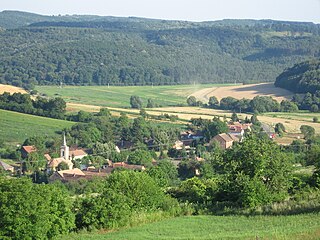Cybersex, also called Internet sex, computer sex, netsex, e-sex, cybering, is a virtual sex encounter in which two or more people have long distance sex via electronic video communication and other electronics connected to a computer network.
The Bayer process is the principal industrial means of refining bauxite to produce alumina (aluminium oxide) and was developed by Carl Josef Bayer. Bauxite, the most important ore of aluminium, contains only 30–60% aluminium oxide (Al2O3), the rest being a mixture of silica, various iron oxides, and titanium dioxide. The aluminium oxide must be further purified before it can be refined into aluminium.

Covasna is a town in Covasna County, Transylvania, Romania, at an altitude of 550–600 m (1,800–1,970 ft). It is known for its natural mineral waters and mofettas.

Piešťany is a town in Slovakia. It is located in the western part of the country within the Trnava Region and is the seat of its own district. It is the biggest and best known spa town in Slovakia and has around 28,000 inhabitants.

Veszprém is an administrative county (vármegye) in Hungary. Veszprém is also the name of the capital city of Veszprém county.

Larry Alton Parrish is an American former professional baseball player, coach and manager. He played in Major League Baseball and the Nippon Professional Baseball league as a third baseman from 1974 to 1990, most prominently as a member of the Montreal Expos and the Texas Rangers.

The Sidoarjo mud flow is the result of an erupting mud volcano in the subdistrict of Porong, Sidoarjo in East Java, Indonesia that has been in eruption since May 2006. It is the biggest mud volcano in the world; responsibility for the disaster was assigned to the blowout of a natural gas well drilled by Lapindo Brantas, although company officials contend it was caused by a very distant earthquake that occurred in a different province.

Tiszaroff is a village in Jász-Nagykun-Szolnok County, in the Northern Great Plain Region of Hungary.

Abaliget is a village in central Baranya County, Pécs District, in southern Hungary. Until the end of World War II, the inhabitants' majority was Danube Swabian, also called locally as Stifolder, because their ancestors arrived in the 17th and 18th centuries from Fulda (district). Most of the former German settlers were expelled to Allied-occupied Germany and Allied-occupied Austria in 1945–1948, pursuant to the Potsdam Agreement. Only a few Germans of Hungary live there, the majority today are the descendants of Hungarians from the Czechoslovak–Hungarian population exchange. They got the houses of the former Danube Swabian inhabitants. It is located in the western Mecsek Mountains. The nearby Abaliget Cave and the area's lakes and hiking trails make it a popular tourist destination. Its population at the 2011 Census was 598.

Zabłocie is a village in Gmina Strumień, Cieszyn County, Silesian Voivodeship, southern Poland. It has a population of 1,312 (2008) and an area of 19,03 km2. It lies in the historical region of Cieszyn Silesia.

The Ajka alumina plant accident in October 2010 was a caustic waste reservoir chain collapse at the Ajkai Timföldgyár alumina plant in Ajka, Veszprém County, in western Hungary.

Aranyosgadány is a village in central Baranya County, Pécs District, in southern Hungary. It is located in the western Baranya Hills. It was established in 1941 with the merger of the settlements of Keménygadány and Pécsaranyos. Its population at the 2011 Census was 355.

Bakóca is a village in Hegyhát District, northern Baranya county, in the Southern Transdanubia region of Hungary. Its population at the 2011 census was 285.

Baranyajenő is a village in Hegyhát District, northern Baranya county, in the Southern Transdanubia region of Hungary. Its population at the 2011 census was 455.
Gödre is a village in Hegyhát District, northern Baranya county, in the Southern Transdanubia region of Hungary. Its population at the 2011 census was 913.

Szágy is a village in Hegyhát District, northern Baranya county, in the Southern Transdanubia region of Hungary. Its population at the 2011 census was 140.
Tormás is a village in Hegyhát District, northern Baranya county, in the Southern Transdanubia region of Hungary. Its population at the 2011 census was 301.
Tékes is a village in Hegyhát District, northern Baranya county, in the Southern Transdanubia region of Hungary. Its population at the 2011 census was 248.

Red mud, now more frequently termed bauxite residue, is an industrial waste generated during the processing of bauxite into alumina using the Bayer process. It is composed of various oxide compounds, including the iron oxides which give its red colour. Over 97% of the alumina produced globally is through the Bayer process; for every tonne (2,200 lb) of alumina produced, approximately 1 to 1.5 tonnes of red mud are also produced; the global average is 1.23. Annual production of alumina in 2023 was over 142 million tonnes resulting in the generation of approximately 170 million tonnes of red mud.
















